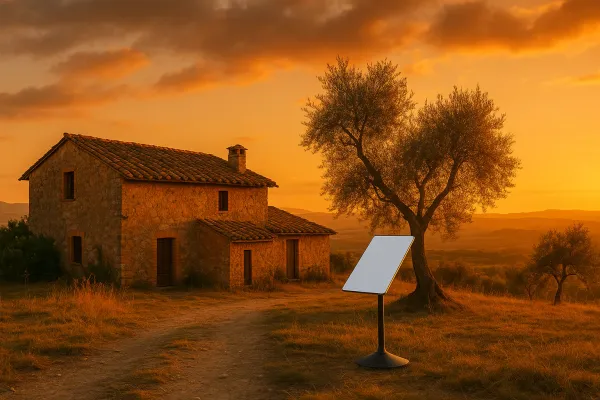Rustic Retreat
Hot Projects
Live broadcasts and documentation from a remote tech outpost in rustic Portugal. Sharing off-grid life, the necessary research & development and the pursuit of life, without centralized infrastructure.
 Subscribe to our new main project Rustic Retreat on the projects own website.
Subscribe to our new main project Rustic Retreat on the projects own website.

Apollo-NG is a mobile, self-sustainable, independent and highly-experimental Hackbase, focused on research, development and usage of next-generation open technology while visiting places without a resident, local Hackerspace and offering other Hackers the opportunity to work together on exciting projects and to share fun, food, tools & resources, knowledge, experience and inspiration.
For a long time, all machines in Apollo-NG's infrastructure use chrony as a replacement for the usual ntpd package. chrony can be compared to ntpd like nginx can be compared to Apache, newer, much more lightweight approach and some additional very nice features. While nginx has replaced most of the Apache installations these days, chrony still isn't adopted as a good alternative by most people yet.
During the NTPD reflection attack time and the mysql/kernel/ntpd leap second bug, it was nice to see how chrony really saved a lot of time and grief by not being affected. It has been working here - and in many other scenarios - absolutely flawlessly until today.
Soon after the release of RTL-SDR a lot of people started to play with software defined radios. Although the Elonics E4000 tuner and the Realtek RTL2832U Chip are a long way from the quality and performance/stability of an USRP(2), the price of $11 - EUR30 makes these devices an ideal beginners device for SDR experiments, without having to invest +$1k into hardware.
As soon as the new OsmoSDR is finished and available, it will provide a very cost-effective device, filling the gap between the funcube, with only 96kHz bandwith - some people lovingly call it the sadcube these days - and the USRP. The OsmoSDR approach seems to be the best compromise of both worlds and the osmocom team is doing a real kick-ass job, putting it together.
Right now, not only hackers, but old-school hams and other people are drawn to gnuradio and rtlsdr but sometimes find it hard to leave their known world behind and dive into the new world of doing radio in software. In order to make the transition easier, good examples are desperately needed. The following setup is an easy to understand, uncluttered narrow band FM receiver, that most hams and radio related people should be able to grasp and tweak.
Here is another beautiful automated reflow toaster oven build, which makes use of our open-sourced picoreflow DIY PID conrolled Reflow Oven Software and some bootstrapping concepts & ideas:
http://www.cube37.com/projects/reflow_toaster/design
It's great to see how the concept and software are spreading fast and spawn a whole new generation of inexpensive, modular and autonomous/remote-controlled PID temperature control approaches for all different kinds of applications, perfectly easy to adapt under DIY conditions, because they were developed under DIY conditions.
From the project's perspective we'll need your feedback, issues and ideas to come up with a rough plan to prioritize a couple of milestones we can fragment into work packages to organize a hackathon to push picoReflow's development further into the direction of an even more universal controller (picoPID) that won't even need to be hacked in order to do something else than just reflow soldering :)
So, please join us on picoPID Development Roadmap Pad and share your feedback & needs.